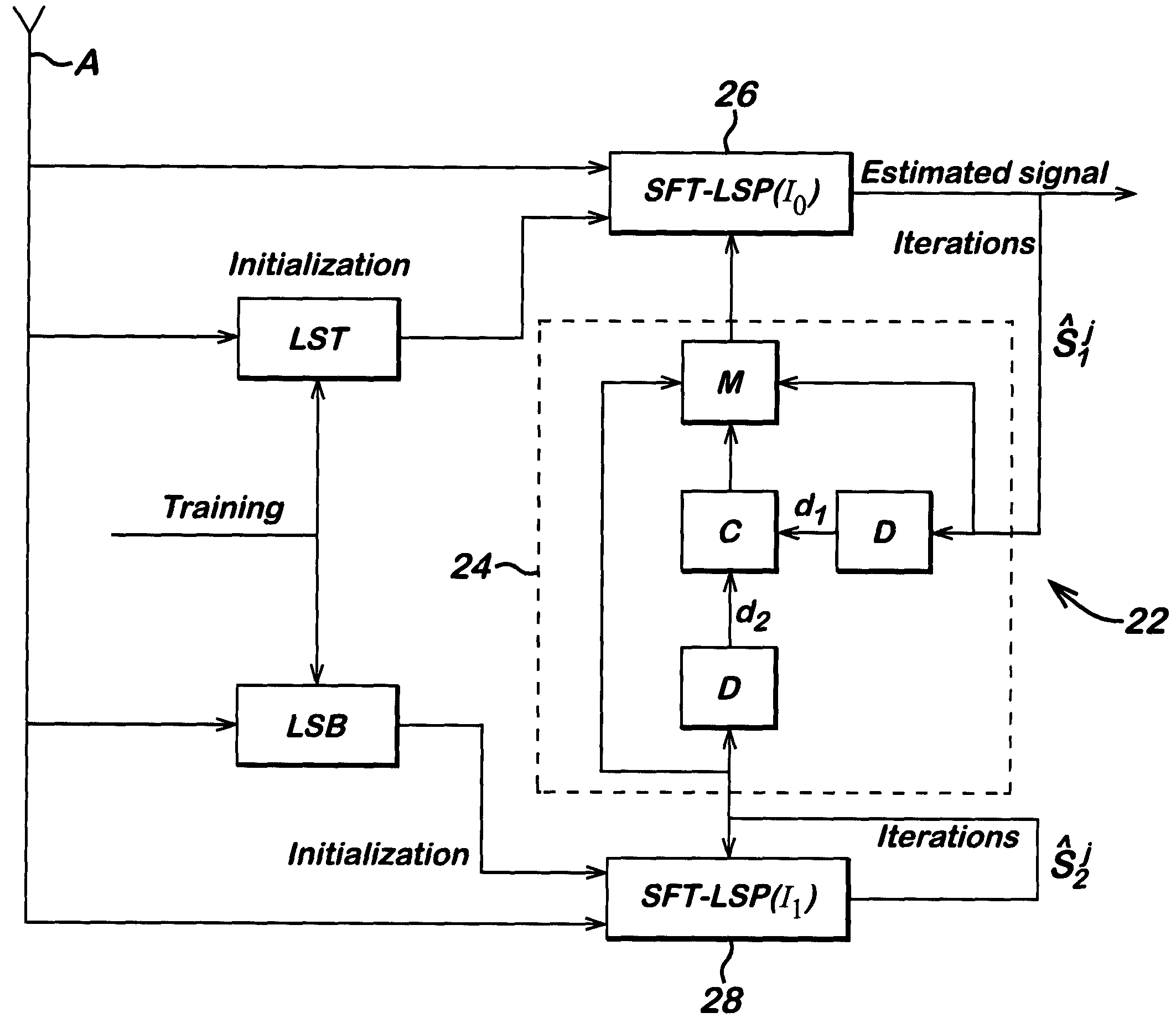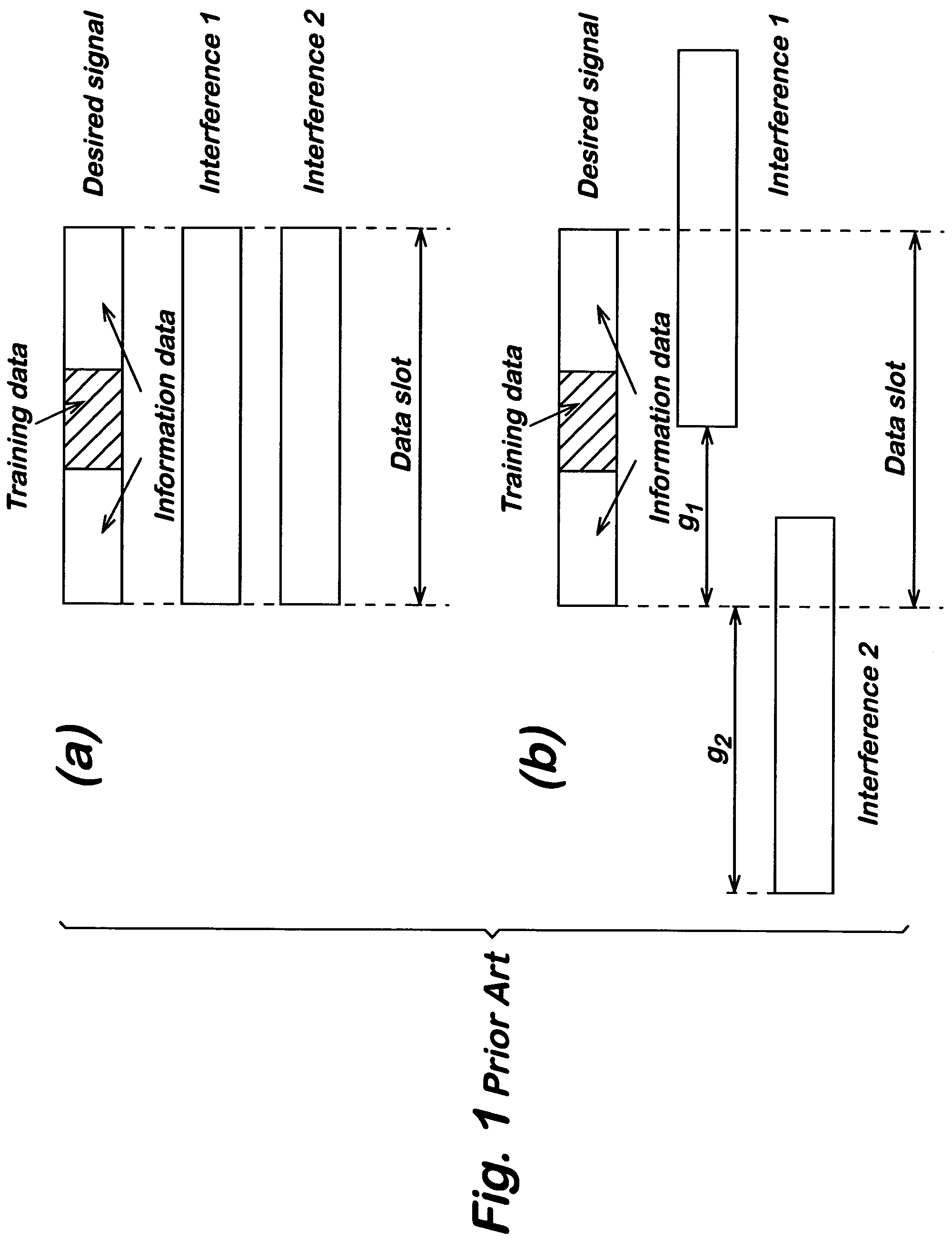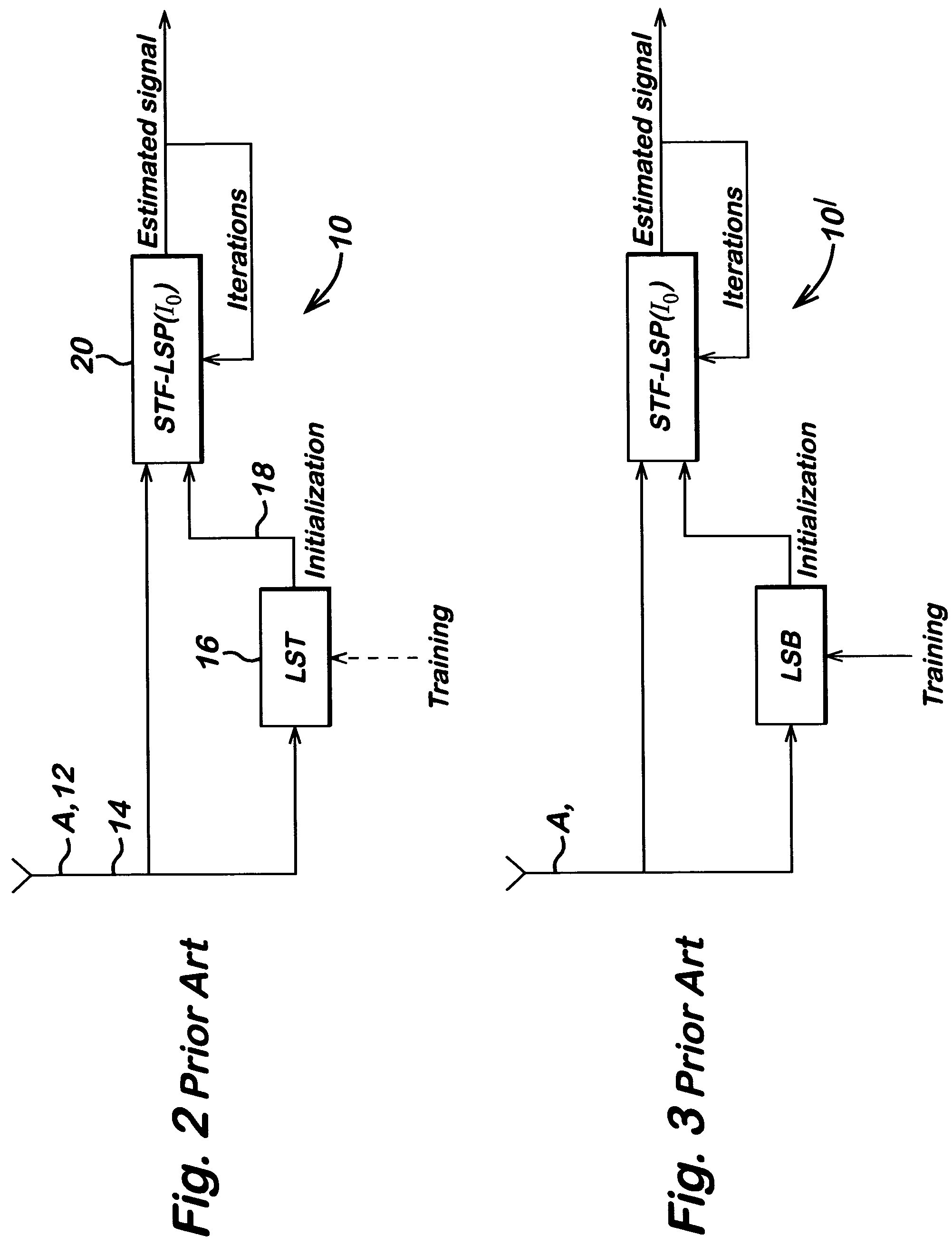Receiver of digital data bursts comprising an antenna array, and a method of receiving
a digital data and antenna array technology, applied in diversity/multi-antenna systems, base station or mobile terminal receivers, etc., can solve problems such as significant performance degradation of known algorithms, ineffectiveness of known training based weight estimation algorithms, and difficulty in timeslot synchronization between signals, so as to improve the ability of co-channel interference and improve the ability of interference rejection
- Summary
- Abstract
- Description
- Claims
- Application Information
AI Technical Summary
Benefits of technology
Problems solved by technology
Method used
Image
Examples
example application
[0045]A typical interference limited scenario is an antenna array of four well-separated elements, a time-frequency slot of 14 Orthogonal Frequency Division Multiplexing (OFDM) symbols (including 2 binary preamble symbols) and 64 subcarriers. QPSK signalling and the HIPERLAN / 2 propagation channel “A” are used for the desired signal and the interference. The interference is assumed to consist of two independent components, similar to the desired signal. The least squares (LS) estimator blocks 26,28 used in the receiver shown in FIG. 4 (and estimators shown in FIGS. 2 and 3 for comparison) have their filter coefficients (weights) estimated by frequency domain modelling as described below.
Weight Estimation by Frequency Domain Modelling
[0046]The following notation is used: X is the matrix of the input signals, St is the vector of the training data, Xt is the matrix of the input signals corresponded to the training data (sub-matrix of X), Θ{•} is a projector the finite alphabet and U is ...
PUM
 Login to View More
Login to View More Abstract
Description
Claims
Application Information
 Login to View More
Login to View More - R&D
- Intellectual Property
- Life Sciences
- Materials
- Tech Scout
- Unparalleled Data Quality
- Higher Quality Content
- 60% Fewer Hallucinations
Browse by: Latest US Patents, China's latest patents, Technical Efficacy Thesaurus, Application Domain, Technology Topic, Popular Technical Reports.
© 2025 PatSnap. All rights reserved.Legal|Privacy policy|Modern Slavery Act Transparency Statement|Sitemap|About US| Contact US: help@patsnap.com



